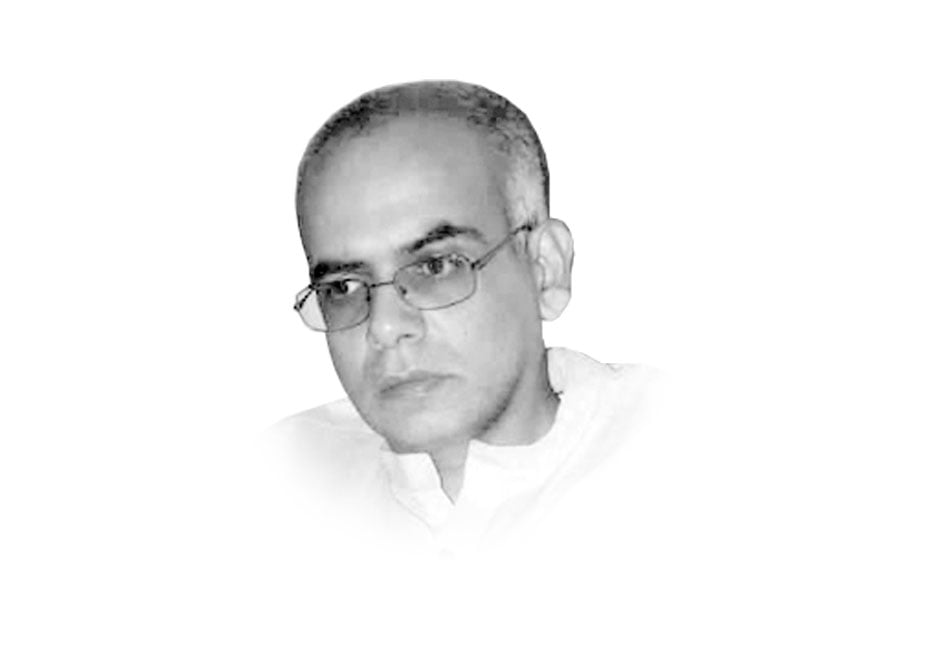
As a Pakistani columnist writing about existing disparities in India, I have no problems admitting that the situation of the handful of minorities within our own country is hardly inspiring. The need to harness economic growth in order to overcome disparities is, however, a problem that most developing countries face and thus merits close attention wherever findings concerning its scope or nature emerge.
On average, poverty has declined across all of India. Yet, deprivation across India today reveals rather uneven patterns, both across the states and amongst different socio-ethnic groups. While the recent decline in poverty has been noticeable for scheduled castes and tribes, it has not declined at the same pace for different religious groups. The incidence of poverty is particularly high for Muslims in India.
The poverty of Indian Muslims is a major concern given that this religious group accounts for a significant minority (12.8 per cent) — much larger compared with the Christian and Sikh populations (2.3 and 1.7 per cent, respectively). Moreover, Muslims in India are found in all parts of the country, unlike other religious minorities. The Sikhs, for instance, principally live in Punjab. Indian Christians are concentrated in Kerala and its adjoining southern states. Indian Jains, another religious minority, mostly live in Gujarat, Rajasthan, Karnataka and Tamil Nadu. Lastly, Zoroastrians are primarily located in Maharashtra and Gujarat.
While Indian Muslims reside in urban and rural areas across India, they have experienced different levels of poverty. The recent analysis illustrates how urban Muslims have seen a relatively slower decline in poverty compared with Hindus and other religious minorities. This is despite the fact that Muslims are more urbanised than even the majority of the Hindus.
Development analysts have identified complex reasons for the existing disparities, some of which are also rooted in history. Urban Muslims in contemporary India, unfortunately, lack the educational and economic opportunities needed to create a new middle class.
Moreover, the state-wise variance in the poverty profile of India provides other interesting insights. The level of poverty is higher for Muslims than Hindus in majority of the states, except those with more socially progressive governments, such as Tamil Nadu, Kerala and Karnataka.
The World Bank-endorsed poverty findings are consistent with the Planning Commission of India’s Human Development Report for 2011, which also found acute levels of poverty amongst urban Muslims. Yet, the market-based policies endorsed by entities like the World Bank seem ineffective in addressing the structural biases and market imperfections, which continue to discriminate against Muslims. Indian planners and decision-makers thus face an uphill task in reducing the existing poverty amongst religious minorities, especially urban Muslims.
Published in The Express Tribune, December 28th, 2013.
Like Opinion & Editorial on Facebook, follow @ETOpEd on Twitter to receive all updates on all our daily pieces.
COMMENTS (68)
Comments are moderated and generally will be posted if they are on-topic and not abusive.
For more information, please see our Comments FAQ



























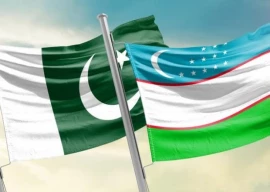
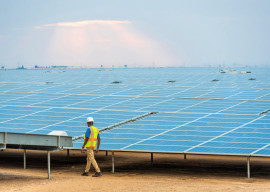


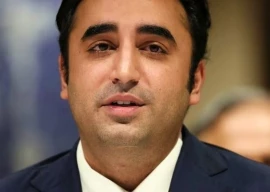
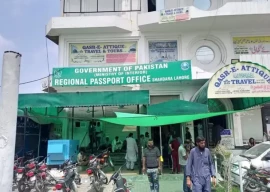
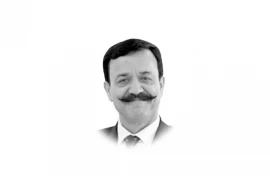



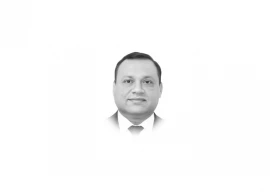

@Khan: Your madrasa education shines.
Hindustani brethren...please foad....and let the Pakistanis call you whatever they want to in their papers...just the way you have papered over destruction of Ayodhya and Gujrat massacres.
Jamia Millia university Dehli, Aligarh university u.p, Usmania Hyderabad, Shibly Naumani Azamgarh etc are in india and build long before pakistan was created and the same way Jamia Deoband and Darul Nadwa are also in present india then why indian muslims are so uneducated even indian institute of technology idea was from abual kalam azad a muslim....
Faisal, let's not re-write history. The idea of partition was TNT - that Hindus and Muslims cannot live together. That is the source of all our problems. Pakistan was not created for any geographical nationalist reasons.
Faisal,
Tomorrow if UP muslims become majority then the cycle of what you are saying perpetuates? Next Bihar then Assam? Sir the thought is scary!!. I understand the Govt of India (for that matter any government) cannot and must not distinct their citizenry on the basis of religion.
@Faisal "The leaders of all communities kept urging the minorities to stay put and not to worry".......then why in pakistan they (leaders) discriminated against minority and not given equal rights constitutionally.
Indians keep trolling on Pakistani websites and internal matters but its fine. As soon as something is written about India, they all start crying and asking the writer to write about his own country.
@anjaan. Yes it does. Any muslims who did not move from india remained an indian citizen with all his rights intact. Those who decided to move lost that right. A homeland for muslims did not envisage all muslims would move thier. No one was expecting the huge movements of population and no one was expecting all the riots and killing. The leaders of all communities kept urging the minorities to stay put and not to worry. The idea of partition was to make the muslim majority areas separate, not to move all muslims to that area.
The article is written as if Muslims in India are deprived opportunities on religious grounds.
After partition, the affluent and influential muslims migrated to Pak, leaving a substantially large class of poor Muslims in India. Of all the religions only Muslims churn out kids like there is no tomorrow, without thinking of the future. Muslims in general are not bothered if their kids are educated or not. I have seen in my school, muslims parents being ignorant towards their kids education, hence higher dropout rate. In Maharashtra, the govt has stopped giving grants to new Marathi medium schools, but Urdu schools still get grants. Even after doing all this these kids dropout of school.Dear Mr. Syed Mohammad Ali you being a development consultant and holding a PhD in Development Anthropology from Melbourne University command a great respect as thinker and commentator. Facts brought out by you are quite informative and lay direction to work further in the direction of improving the poverty profile of India. However a deliberate twist to indicate that Muslims of India are being discriminated in this regard is unfair. You having such world wise exposure have certainly much better exposure than a normal home bound Pakistani dependent on local press and motivated propaganda. You must be aware that how much has been done in India by the governments, NGOs and private institutions for the uplift of sc, st, socially backwards and economically poor. Billions and billions of rupees have been earmarked and being spent. No doubt because of rampant corruption, hallmark of this subcontinent, full benefits have filtered to the concerned. I am sure you are aware that this slow move is not due to caste, creed, language, region or religious consideration. it is unfortunate that most of the poor /uneducated population and specially Muslims of this subcontinent are so entrapped under the influence of the Maulvis that they are struggling badly to come forward to embrace a new world order of economic growth and material progress. they are being led to lead a life and belief that may had been the best in the times of advent of these religions. We expect and request you to kindly lead us and show us the way as what and how things be done to break the shackles and improve poverty profile.regards.
The followup discussions miss the main point that female literacy is most important element for advancement of a community . Literate female has fewer children and educates their children . Muslims in India are very heterogeneous and to lump together and make stereotyped statements show prejudice The fact that In Andhra Pradesh state, for example, 68% of Muslims are literate, higher than the state and national average. School enrolment rates for Muslim children are above 90% in Kerala and Tamil Nadu. The laggards are in India's poorest states UP and and Bihar were the majority of poor Muslims live .They are marginally worse than their Hindu brothers and sisters . literacy rate in Kerala Muslims is very high (male - 89.4 and female - 85.5 per cent) . Kerala model shows us that female literacy is key for smaller families , educated children and improvement in socio economic indicators. This has got nothing to do with belonging to any religion
@Pakistani1 However the fact is indian hindus are immigrating in masses to muslim countries Malaysia, UAE, Saudi and other Gulf countries are shining examples, actions speak louder than words
First you say Indians are MIGRATING to Muslim countries,when G.Din says Indians dont migrate but having temporary jobs
You talk about UK citizenship... When did UK become a Muslim country??? Is that what Anjem Choudhary said to you???
Now who is high on ignorance???
@Gp65:
Excellent points and all true. A community also has to take personal responsibilities in its economic progress and can't just blame the government and society for their backwardness especially in a country with a secular constitution which grants equal rights to all citizen.
Also, a macro point to note is that no Indian muslims are knocking on the doors of Pakistan to "escape" any discrimination, as would be the case if it were institutionalized and true. In fact, not only the non-Muslims of Pakistan but even millions of Pakistani muslims enter and stay in India illegally.
@Hella: Even in Middle East non-Muslims are preferred in jobs, because they do not take time off from work to pray 5 times a day. That’s the reason so many Hindus & Christians migrate to Muslim countries, because they are preferred. . The Non-Muslim Immigrant Workers in the Middle East are not obliged to PRAY. On the other Hand Muslim Immigrant Workers in the Middle East ARE OBLIGED TO PRAY AS WELL AS FAST during Ramadan. . Cheers
@Pankaj: Can you provide me a bit of proof of what you say other than your ignorance, first time i hear that indians are preferred over other nationalities! The only only reason i can think of is malbaris ready for under $500 a month for engineering jobs !!!!
@kkk; @Sss: @Pakistani Gulf countries wealth is not due their own industriousness but because of oil. If you had given an example of Turkey or Malaysia you would have had greater credibility.
In any case, no one has claimed that all Muslim countries are poor. What has been claimed is that in countries which do not have Muslim majority Hindus are better off than Muslims due to lower family sizes and greater investment in education in addition to greater female workforce participation. What is seen India thus is no different from UK, Canada, US.
Even in Middle East non-Muslims are preferred in jobs, because they do not take time off from work to pray 5 times a day. That's the reason so many Hindus & Christians migrate to Muslim countries, because they are preferred. Additionally in comparison Muslims lack qualifications and are unable to take advantage of job opportunities even in Muslim countries. Even in a country like U.K. Muslims are far behind other religious groups in education and income. Probably Muslims are more interested in religion then in education and earning a good living.
@Pakistani: did not you read post by G. Din, before writing your post? OK, what is the source of income of Saudia, UAE, malaysia and Indonesia?? In so called Muslim countries, why Indians( Hindus and others including muslims) are preferred over pakistanis( Muslims mainly). why they can not compete with Indians in this job market? any answer?/
ETBLOGS1987
@antanu: Census after census has confirmed that Indian Muslims have a much higher birth rate compared to Indian Hindus. They also have a lower literacy rate and lower female workforce participation.
Denying facts will not change them.
The reason why Indian Muslms are behind their fellow compatriots is the same that Pakistanis are behind Indians in US and Canada I.e. bigger family sizes, less investment in education and lower female participation in the workforce. http://www.dawn.com/news/720712/dollars-and-sense-of-american-desis http://www.dawn.com/news/718842/pakistani-canadians-falling-below-the-poverty-line
As expert of developmental economics you are probably aware that cultural attitudes influence the level of development in a country and community irrespective of the rich resources . The following article gives a balanced account as to why Muslims were not able to take part in Indian development. Why do Indian Muslims lag behind? By Soutik Biswas BBC News http://news.bbc.co.uk/2/hi/south_asia/6938090.stm
ETBLOGS1987
ET mods everything is factual. Please post.
There is no state level discrimination against Non-Hindus in India in contrast with deliberate state level discrimination against non-Muslims in Pakistan which is even baked into its constitution. Had it been the case, it would not just be Indian Muslims but rather Sikhs, Christians, Parsis and Jains who would also have a similar fate.
The lower per capita income of Indian Muslims is due to socioeconomic choices many (not all of them) make which not on,y reduce family income but divide the lower in ome amidst a greater family size. The choices are:
1) higher birth rate among Muslims which has been observed one census after another
2) lower female workforce participation
3) sending kids to madrasas for education rather than secular schools where they can learn income generating skills.
If there were institutionalised discrimination against Indian Muslims, Azim Premji would nt be a billionaire. India would not have had Muslim CJ, President, CEC, chief of Navy and so on. If people resented Muslims, they would not pay to watch moies starring Amir, Shah Rukh and Salman. Once Indian Muslims make different socioeconomic choices, they will not lag behind.
Now let us talk about Ahmadis in Pakistan. Does Shezaan Juice ring a bell?
@Hafiz: would you please tell how many Muslims have 10 children? come on friend...don't repeat this RSS sponsored falsehood to avoid the real problems. its a myth which has been spread by RSS to create antipathy towards Muslims. However if you have real data ...Please enlighten the readers or just shut up.
Pakistan became state in 1947 but we got university of Haripur in 2012. what kind of discrimination u talking about sir if this is not one of em??/
@KanishQ:
TEMPORARILY for 30 years??? Also, i dont understand how they are earning a living in a muslim country as one of your cyber hindu brother claimed all muslim countries to be "economic disaster". Too much hypocrisy of cyber hindus here.
@Pakistani1: However the fact is Indian Hindus are immigrating in masses to Muslim countries Malaysia, UAE, Saudi and other Gulf countries are shining examples, actions speak louder than words
You are wrong on every count. Indian Hindus are traveling to the mentioned countries to work. If Indian Hindus have to migrate, there are many more better places such as Europe, Australia, Africa, Canada, United States. You will find hundreds of us actually migrated and settled in these lands. We would not immigrate to any of the countries you have stated even if the nationality was offered to us on a golden plate. That,s proven by the number of Indian Hindus who have actually taken up citizen ship in any of the aid nations.
Why crys for indian muslims first give us good education in pakistan sir.... and why muslims are in better position in kernatka, kerala, tamil nadu are bette may be they worked and resides in mid east oil countries....
@KanishQ: Typical two faced cyber hindu, who will hate on muslims but will still eat from a muslims plate.
@KanishQ:
Yes they want to migrating despite such a shining and prosperous economy as u claim and pls check population figures indian populations are way more higher than Pakistanis in UAE (muslim country). Also, please check UK citizenship figures, indians form the largest number of applicants for UK citizenship and do not care about loosing indian citizenship. I dont even want to talk about the way you treat your own low caste hindus let alone UAE.
You are high on ignorance. Grapes are truly sour
@Pakistani1: Indians are NOT migrating to the middle-east. They are merely going there to TEMPORARILY earn a living. They go there with the full understanding and intention that once Indian economy grows to provide for their livelihood, they will return to India. That is why all of them send their earnings back to India and send their children to Indian schools in those countries.
Only Pakis are obsessed with migrating to "muslim" countries even when they are treated as dirt!!!!
@dr gn seetharam:
Pls shed this knowledge on ignorant Hindus leaving their "conducive to economic success" country to get jobs in muslim countries in all gulf countries, Malaysia & Indonesia. Actions speak louder than words.
@Pakistani1: to Manish Rohera "However the fact is indian hindus are immigrating in masses to muslim countries Malaysia, UAE, Saudi and other Gulf countries are shining examples, actions speak louder than words" Indian Hindus ( and others) will migrate to any country where they can sell their skills. They find better employment than Pakistanis because they have developed a reputation for intelligence and hard work and are preferred over local and other Muslims. Those countries are not doing any favours to them, nor are those who are migrating specially attracted to those countries. The day gates are closed, as happened in Saudi Arabia recently, they will seek out other avenues. Actions do speak louder than words.
@Imran: Take a look at various comparative figures like area , population , density and then you will know why you see more poor people in Delhi . Of course everybody knows that Pakistan is very rich country in the world . http://asian-cities.comparical.com/comparison/delhi-vs-lahore-Njk1OTI
@Manish Rohera:
However the fact is indian hindus are immigrating in masses to muslim countries Malaysia, UAE, Saudi and other Gulf countries are shining examples, actions speak louder than words
It may be a fact that Indian Muslims are poorer as compared to Hindus, Christians, Sikhs etc. The Muslims have only to blame themselves. reasons:
1) They don't believe in family planning. Large families means fewer resources to provide kids with a decent education. Mulllahs encourage Muslims to go ahead and multiply with scant consideration for how the kids borne out of such wedlocks will be supported.
2) Poor education translates into poor opportunities for decent jobs and social mobility.
3) A key indicator of social and economic up-liftment is raising female literacy standards. There is ample evidence to support this as seen in the southern states of India. Muslims don't want their girls educated. This has a negative impact on the entire social structure of the community.
4) The vast majority of Muslims are honest hardworking folks. However, every major crime syndicate in India is today associated with Muslims. Be it currency smuggling, counterfeit notes, drug running, smuggling, name it and the community in terms of per capita are up to their eyeballs in it. Most of these activities are supported by Pakistan's ISI. This does not show well with the larger Indian population (not restricted to Hindus) and means fewer opportunities for Muslims. It is like Italians being tied with the Mafia - guilt by association.
5) The Muslim community is allowed to wear their burkhas and such to places of work with minimal restrictions. Every major Muslim festival is a national holiday. However, in recent years, there have been growing chorus of demands from Mullahs that Muslims should be given time off to pray, time off for other religious activities etc with full pay. No other community gets these benefits and a large part of the Indian businesses don't want Muslims in their ranks because they fear giving in to such demands will bring the poisons of politics and religion into their business environment affect profitability negatively.
6) The likes of Indian Mujaheddin and HUJI have made Muslims very popular with the larger population. Add to this the poison coming from a section of the Mullah crowd. Muslims today carry the guilt by association for the acts of these criminals.
If Muslims have to improve their lot, they have to spurn their Mullahs and get into the secular framework of India. Millions of Muslims have and are highly successful like any other Hindu, Sikh, Parsi or Christian. If Muslims expect that India will give them a special reservation status so that government & businesses will be forced to hire them, that's not going to happen. Pakistan was created for that purpose and as a Indian and a Hindu, I will oppose it and many millions like me will fight it tooth and nail.
@Vikas, Mumbai: Dear Author, A nice informative article that gives us facts to work with more vigor and directions to work. How ever, to be very honest, a deliberate little twist to convey that Muslims have been effected more than others does not fit in with the scholarly profile and stature of the writer. We look forward for a few clarifications on two points. 1."market-based policies endorsed by entities like the World Bank seem ineffective in addressing the structural biases and market imperfections, which continue to discriminate against Muslims." 2.. "While the recent decline in poverty has been noticeable for scheduled castes and tribes, it has not declined at the same pace for different religious groups. The incidence of poverty is particularly high for Muslims in India.
My observations on the subjects are (a) I have worked with national and international industries in India and found that nothing matters there except ability and proficiency.Religion is not on cards for appointments and promotions etc.The number of world class industries run in India by Muslims and there hold in trade is worth noticing. (b) Secondly, Sir, The schedule castes and tribes, thanks to their leaders, have put in their concentrated energy to take every benefit of the system to improve. Education has been the key. Sad but it is true, The prominent Muslims leaders have some how not been able to wean away the Muslim masses from the Madarsas and motivate them to join the modern stream of education. The maul-vi has been a great factor who is convinced that modern education will loosen his hold. Today it is so common to see the menial,domestic helps,factory workers are adhering family planning and investing in education of their children. My driver's daughter is a doctor and son an engeneer. I worked in steel sector where Muslims work in large number and are best casters and craftsmen. In spite of my best efforts i have mostly failed to persuade them to send their children to company run schools, where they have right to admission, or other English medium schools. Some how they prefer the maulvi at home and madarsa for school.
But we are aware of these problems and are committed to bring all Indians to the main stream may be it will take some time. Thanks to the writer to have generated this conversation.
@dr gn seetharam: How do you explain hindus going to UAE & Saudi Arabia ??? They are not hindu countries
Please shed light on plight of Hindus in Pakistan. Poverty should not be religion specific.
Sorry but I always find Muslims as cry babies it may be Jinnah before 47,you will see it in Syria,Libya they themselves created sectarian problems and now asking why isn't world helping see Pakistan they will be a cry baby that America is responsible for Taliban as if they are victims there is an inferiority complex I don't know why in India they want perks but won't take part in family planning as the saying goes losers have excuses sorry but the truth is bitter
Sir, I agree that India will take a few decades to become a middle income country. It can never become a country free of poverty, only try to reduce it to a minimum. In multicultural, pluralistic and religiously diverse countries like India, Muslims will remain poorer compared to other sections. You may be aware that many Muslims do not like their women being educated or joining the work force, how can their family Income be higher ?
The muslims living in secular area are well developed. The reason being they send their kids to regular schools and colleges, who then take up regular job and live normal middle class life. The problem with muslim-only areas is that their leaders are more involved in religio-political hatred and such issues. They do not let govt build any school, college, hospital, police station etc. there. Whenever govt allocates a land to build anything, they protest that they want a mosque or madarassah there and stop the project. So then their kids either do not get educated or learn only madarassah stuff. Then they do not get a normal job, and depend on small business/labor work. Plus the 10+ kids per family issue. So you can see huge ratio of muslims in criminals/prisoners too. The society needs to be divided equally and muslim-only slums need to be divided and mixed with other area, but the politicians would never want this happen as they don't want to see their muslim community prosper because then they might lose their vote bank.
India still faces an enormous challenge of making the benefits of this growth reach the marginalised segments of society, especially its religious minorities.
Parsis, christians, sikhs jews etc are doing much better than hindus in India, so that pretty much negates your entire article. Muslims to badly in whichever country where they are in a minority. Where they are a majority, they grab from their minorities.
All statistics aside, been to Delhi many times and the poverty that you see on the streets, compared to Lahore, is just alarming.
The author has understandably attempted to project the Indian Muslims in poor light quoting selective data but ignoring many positives which have improved the lot of Muslims in India. The author has failed to highlight that there is no discrimination practiced against Muslims in any sphere which gives them equal opportunities to prosper along with the majority community. However, Muslims who have restricted their families to two members or so have made more progress as compared to others and incidentally, the same is also applicable to the majority community. As a matter of fact, Jinnah's famous quote of equal treatment of minorities in Pakistan is being followed in letter and spirit in India for all minorities including Muslims but the same was not being followed in Pakistan including some sects of Muslims as well.
@Anjaan: Pakistan's intelleculas reflect their selfiamge world,they dont try to examine the root causes. I wish these intelleculas may have a universal approach not parochial.
Expected much better analysis from a writer of your caliber.
The poverty in Muslim community is not uniform, but varies regionally.
As almost 50% of entire muslim population is concentrated in UP, Bihar, West Bengal and Assam, which fare miserably on all economic indices, so the muslims there are suffering along with the Hindus. Whereas those in other states, where the affluence level is greater, are enjoying better livelihood along with their Hindu neighbours. Also, in a secular democratic country, neither is it feasible nor possible for a government to keep a particular community tied down. Later or sooner, there are blowbacks for such actions.
"The level of poverty is higher for Muslims than Hindus in majority of the states, except those with more socially progressive governments, such as Tamil Nadu, Kerala and Karnataka."
But the level of poverty with in Pakistan is more higher where only Muslims no other sect. Sir, you have done good research but what is the out put of this article....it was good if you compared Muslim's ecnomic condition in India and Pkistan, being a welfare state still why Poverty has not been removed...where dose the Zakat go? I met some wealthy Muslim students in ND and rasied question about the poor Muslim in India, there answer was simple......they do not work, and those work they have their share... There are several dynamics behind the Muslim's poverty.We need to address them.
Even in UK,the unemployment rate is highest for Muslims and the ratio of prisoners too is highest. The unemployment rate for other minorities is lesser than local population.
If discrimination by Hindus is the reason behind poverty among Indian Muslims, Pakistan and BD should have raced ahead to become super powers after 67 years. Where are they? Food for thought!
@Pankaj: Emanuel's remarks are supposed be sarcastic. I had fun reading them.
Remember, Pakistan was made as a homeland for the muslims of the Indian subcontinent. They are to be blamed themselves if no one trusts them
To Emanuel, Very difficult post to understand. What do you mean by inheritor of islam in south Asia? all the south Asian Muslims should be within pakistani territory? Muslim poverty is not is not an Indian issue? Muslim poverty anywhere in south Asia is pakistani issue? Please elaborate on all these points, to make any sense of your post.
go to madrassa don't pass exams then complain of not getting jobs..........
Raj Kafir Not so, Pakistan offer better alternative for Muslims of South Asia. It provide them better life here and best reward of Paradise in after life . The present rulers of Pakistan have been not up to the task and distorted the mission of Quaid. As inheritor of Islam in South Asia, Pakistan cannt be complete till it has all the SouthAsian Muslims within its territorial fold. Only then it can reach its full potential as envisioned by Quaid. Indian progress and poverty is not Muslim issue and in same vein it is not honest to make Muslim Poverty an Indian issue to be solved by Indians. Muslim poverty anywhere in South Asia is Pakistani issue.
@ Author : Murtaza Haider in Dawn has done a better analysis with far more statistics thrown in. In his article you will notice that the poverty level reductions for Rural Muslims is better than Rural Hindus. It would have been highly appreciated if you had shown something positive also instead of the playing the same record as to how the Indian Muslims are discriminated against in 'Secular' India. Another thing , when there is a big difference in the percentage (of perecntage composition) between Muslims (13%) at one hand and the Sikhs+Christians (4%) on the other , it would be better to compare the absolute numbers rather than the percentage because any small change in numbers will affect the smaller minority group (in this case the sikhs+christians) rather than the larger (muslims). Such are the nuances of math /statistics http://www.dawn.com/news/1074856/the-persistent-poverty-among-muslims-in-urban-india
@ author - although it is politically incorrect to mention the truth, the 2 main reasons why Muslims in India on average fall behind is 1> Large average # of children per family 2> which causes, a shortgage of financial reserves in the family to be able to educate those children properly - and many end up going to madrassas rather than proper schools.
And the cycle perpuates generation after generation! Add to that are the ulema / religious councils; which try to keep their control by dissuading the community from getting out of the above cycle, which adds to the community's miseries.
The other minorities you mention - Sikhs, Jains, Christians, Parsis are a much smaller percentage of the Indian population; but have much higher average education levels & much smaller average family sizes, and hence have above average income levels as compared to the rest of India.
Opportunities exist for all, irrespective of their background - only those who grab the opportunities succeed; again irrespective of their background!
So it is not the system which is to blame, it is the community at large where the fault lies.
worry about ur poverty which is alarmingly increasing coz of no job creation
indian muslims still got a lower birth rate than pakistani muslims...... pakistani hindus and christians are far more poorer .... almost all of them working as sanitary workers.... to author.... write something about pak hindus.........apart from writing that their women are kidnapped,raped and converted
One of my high school friend has 11 siblings and his father is a motor cycle mechanic. Now tell me how in the world his parents can afford basic things for family of 14? Why don't they stop at 2 and see whether poverty goes away or not?
This article started with an interesting premise. But for some inexplicable reason it chose to then veer and focus only on one community, India's Muslims. Why this inclination by Pakistani authors to only focus on one community? I simply fail to understand.
Also I would like to point out an error. India's Christians are not only to be found in Kerala and adjoining southern states as the author mentions, but all over India including Goa and constitute a bigger majority in the North East of India. The author could also do well to understand how Sikhs and Christians are thriving in India despite our minuscule numbers. The reason for this is very simple. Other minorities such as Christians are well integrated with society, have small families and invest a lot in their child's education.
great problem of muslims is production rate, why 10 child need for a parent.
Nice article. Top 180 millions Indians are far more better than total 180 millions Pakistanis.
Indian muslims are poor than other community in India because large number of muslims live in U.P., West Bengal and these two states are not growing as other states. In these states muslims, hindu's both are poor; but these states are growing more than any other state of pakistan.
But muslims are very rich in Gujarat, A.P. etc. It is not fair to try to tell the people that muslims are not growing as much other communities.
Yet, the market-based policies endorsed by entities like the World Bank seem ineffective in addressing the structural biases and market imperfections, which continue to discriminate against Muslims.
@author
Will you please tell which are the policies and how do they discriminate against muslims? Thanks.